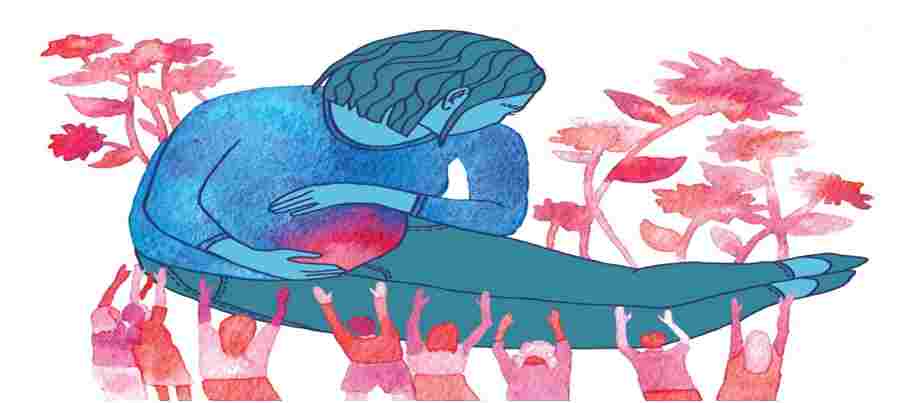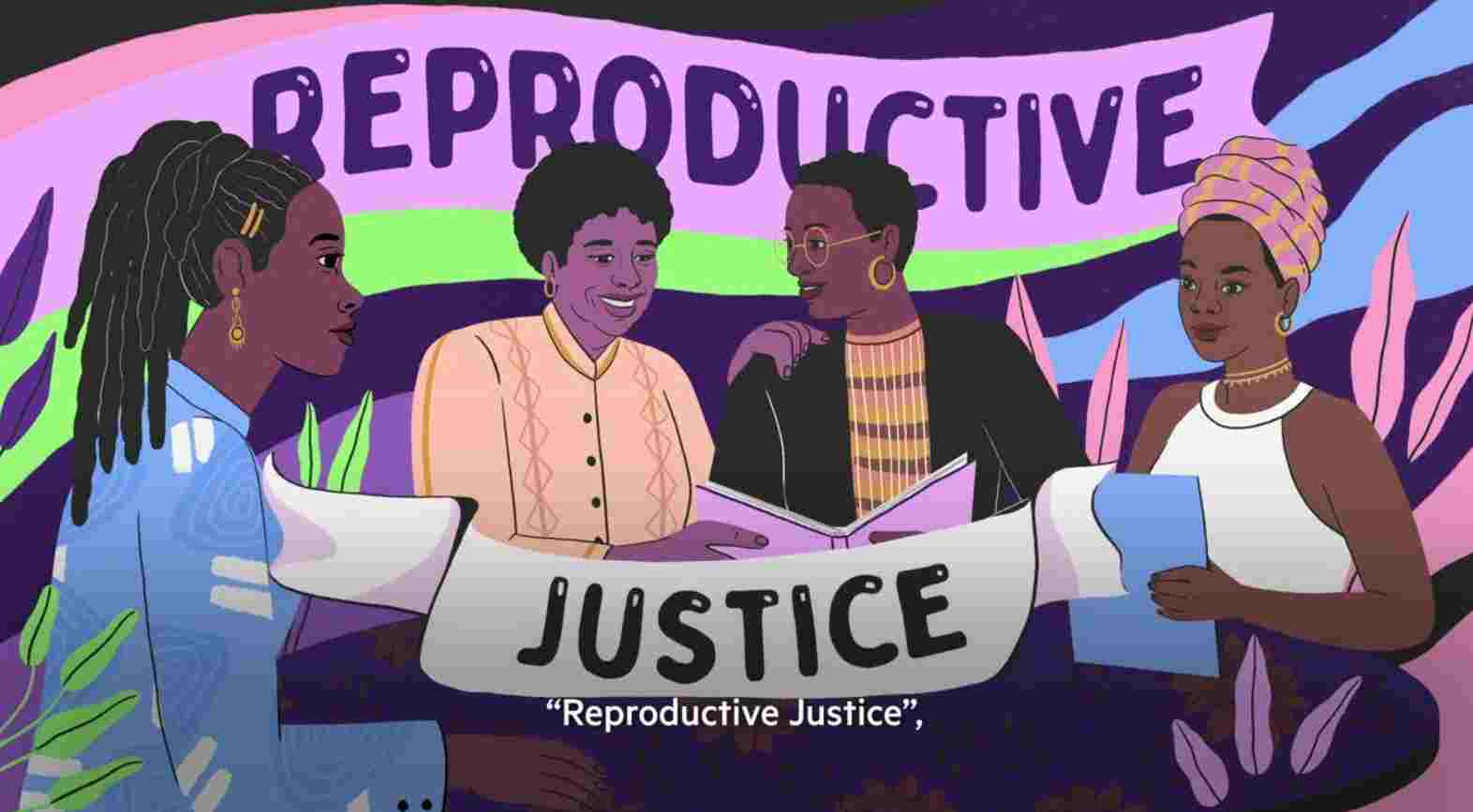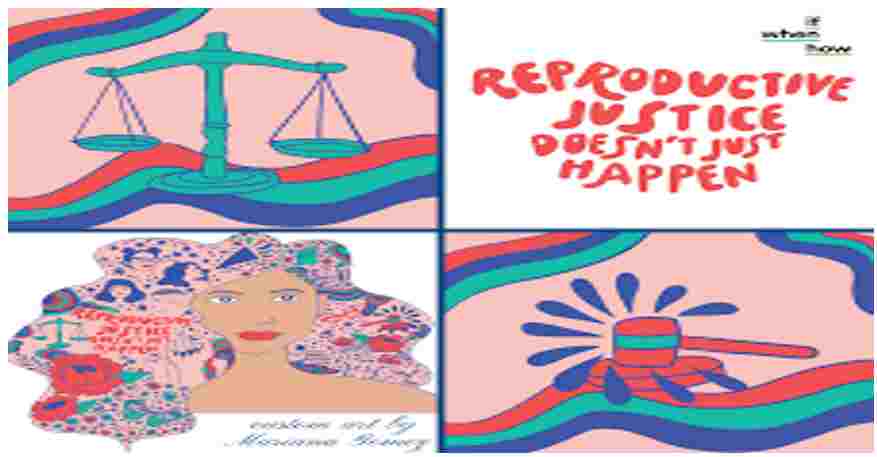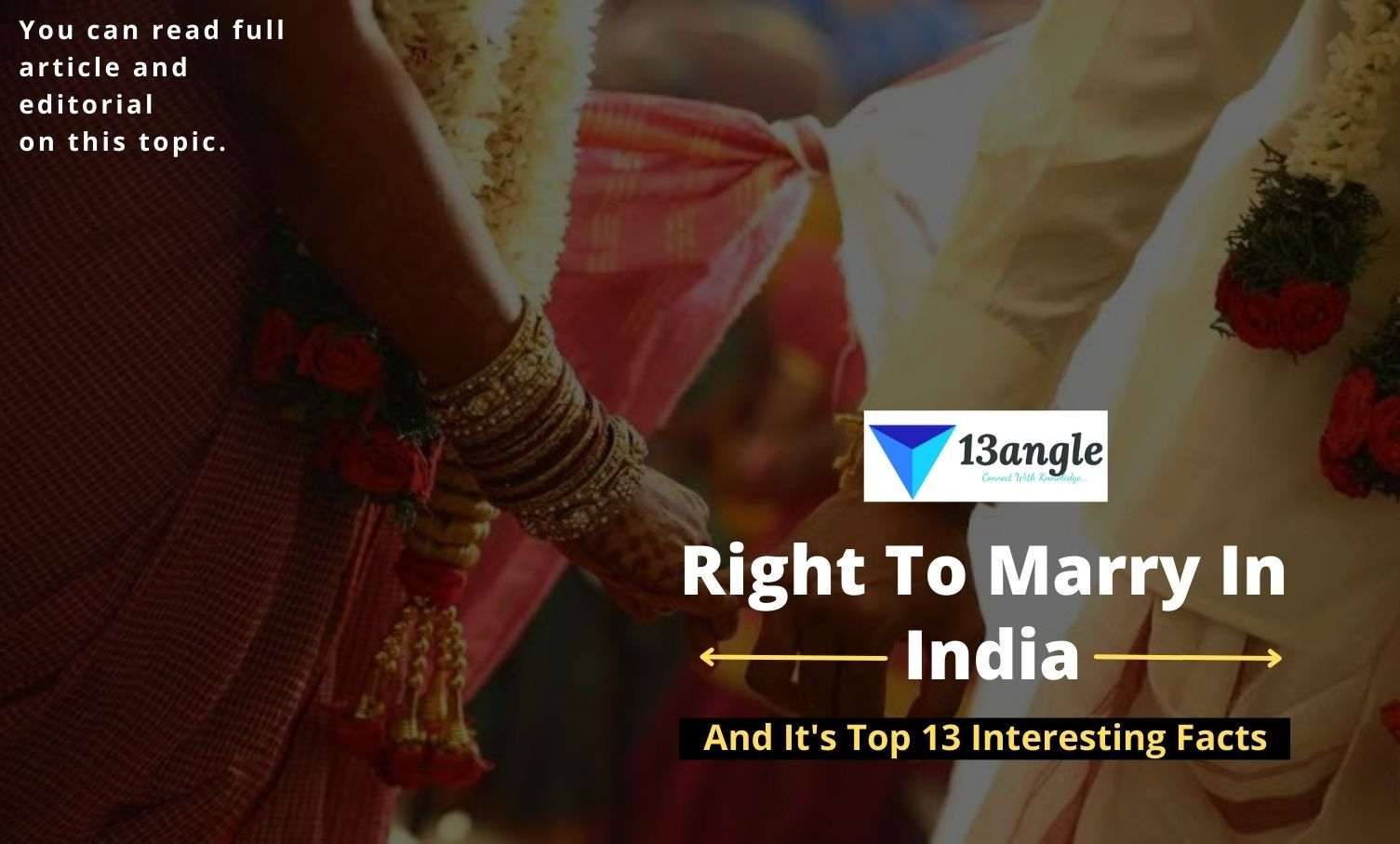
Introduction
Since the early 1990s, several organisations, mostly those run by women of colour, have been considering how class, racism, and gender concerns connect with reproductive politics. The phrase “Reproductive Justice” was first used by women of colour in 1994, during the Cairo International Conference on Population and Development. Two months following the Cairo meeting in September, the first step toward the reproductive justice framework was taken. At a national pro-choice conference hosted by the Illinois Pro-Choice Alliance in Chicago in 1994, a group of African-American women (some of whom went on to start Sister Song) spontaneously organised an unofficial Black Women’s Caucus and coined the phrase “Reproductive Justice.”
At the time, “reproductive health integrated with social justice” was the definition of reproductive justice. As an intersectional theory arising from the experiences of women of colour whose communities endure reproductive oppression, reproductive justice has now been further explored. It is predicated on the knowledge that the effects of race, class, and gender on women of colour are not additive but integrative, resulting in this paradigm of intersectionality. Asian Communities for Reproductive Justice published a crucial study in 2005 that further developed the idea of reproductive justice. By examining the three primary frameworks for combating reproductive oppression—Reproductive Health, which deals with service delivery, Reproductive Rights, which addresses the legal system, and Reproductive Justice, which focuses on movement—ACRJ strengthened its analysis of reproductive justice.
What Is Reproductive Justice?

- A new vision of reproductive justice, co-published by Sister Song and developed by ACRJ, is the cornerstone of initiatives to address reproductive discrimination at the federal, state, and local levels. The full physical, mental, spiritual, political, social, environmental, and economic well-being of women and girls is defined as the full realisation and protection of women’s human rights, according to the philosophy of reproductive justice. It presents a fresh viewpoint on the advocacy of reproductive issues, highlighting the necessity of fighting for equal rights for Indigenous women and women of colour.
- The right to have children
- The right to choose not to have children; and
- The right to raise our own children and decide how we will give birth.
According to the Reproductive Justice theory, a woman’s ability to choose her own reproductive destiny is intimately related to the circumstances in her community, and these circumstances go beyond just personal preference and access. Reproductive justice is a deliberate attempt to balance the conflicting ideals of equality and the social reality of inequity. Reproductive justice draws attention to the disparities in access to making decisions about our reproductive fate. Reproductive Justice promotes the connections between women and their families and creates the conditions for women to make informed decisions about their reproductive health and well-being, including access to jobs paying a living wage, affordable quality education opportunities, responsible public services like quality health care and education, affordable child care, and freedom from personal discrimination and environmentally safe communities. The separation of abortion from other social justice issues that affect communities of colour is one of the main challenges Reproductive Justice seeks to solve. Abortion, when considered in isolation from other social justice and human rights issues, ignores several community-based issues that have a direct impact on a woman’s decision-making process, including economic justice, the environment, immigrants’ rights, disability rights, discrimination based on race and sexual orientation, and a host of other issues. By redefining the issue as reproductive oppression (the management and exploitation of women, girls, and people). Instead of a restricted focus on defending the legal (through our bodies, sexuality, labour, and reproduction) we are creating a more inclusive vision of how to go with creating a new society that includes the right-to-abortion movement.
Reproductive Justice is a foundational theory that centres on uniting women, girls, and their communities to confront structural power disparities through a thorough and radical process of empowerment. Every American family may benefit from the Reproductive Justice approach, which provides a persuasive and more convincing foundation for empowering women and girls. Instead of concentrating on the ends, a contentious discussion about birth control and abortion that ignores the actual experiences of women and girls should be the focus.
How Did Reproductive Justice Framework Evolve?

- The timeline that follows demonstrates how the concept of “Reproductive Justice” has changed through time and contrasts it with the guidelines for reproductive rights established at the 1994 International Conference on Population and Development in Cairo. Reproductive Justice is not only a paradigm change but it is also intended to be applied specifically to the United States due to our history of American exceptionalism, which has restricted our country’s familiarity with the human rights framework, even within social justice movements. This phrase, like the one used to describe women of color, probably won’t be universally applicable outside of our boundaries. Reproductive justice is a manifestation of the Cairo conference’s standards for sexual and reproductive health in the United States and provides a more nuanced interpretation of what the Cairo and Beijing agreements included and did not include. Because it most directly ties to our familiarity with the phrases social justice and reproductive rights, it is more frequently accepted in the United States.
1. 1984– The first International Women and Health Meeting (IWHM) was organized by feminists in 1975. To make rights-based demands for gender equality and reproductive freedom, the 1984 IWHM in Amsterdam created the term “Reproductive Rights.” The Women’s Global Network for Reproductive Rights, which emerged from the Amsterdam meeting, states that “reproductive rights are a series of rights that enable all women to decide whether or not to have children without discrimination on the basis of nationality, class, ethnicity, race, age, religion, disability, sexual orientation, or marital status.” This includes the right to obtain a safe, authorized abortion. In contrast to the Mexico City Policy, which President Reagan introduced in 1984 and stipulated that nongovernmental organizations must consent to as a condition of receiving federal funds, this formulation of a legal system of reproductive rights.
Due to its emphasis on individual rights (a concept recognizable to Americans based on the U.S. Constitution), this definition of reproductive rights was well-liked in the country. However, it did not make an explicit connection between an individual woman and the status of her community.
2. 1993 – Women’s rights are human rights, according to feminists at the 1993 Vienna Human Rights Conference. Feminists altered the direction and fundamental tenets of the human rights movement with this declaration. First, economic, social, and cultural rights were once again related to civil and political rights (a linkage that was severed by Cold War politics and beyond the scope of this paper to address). Women should be able to exercise their human rights in both public and private, according to the declaration. The Women’s Rights as Human Rights proclamation opened the door for swift growth in both the worldwide women’s movement and the human rights movement by stating that human rights abuses might occur in either the public or private domains.
3. 1994 – In the run-up to the International Conference on Population and Development, the global movement for women’s health devised the concept of “Sexual Rights,” but it was rejected for inclusion in the Cairo Programme of Action due to resistance from conservative and fundamentalist nations. Instead, the phrase “Reproductive Rights” was added to the Program in an effort to forge a consensus among women’s rights, health, and demographic experts in order to overcome the conservative and fundamentalist groups’ unified opposition to any direct attack on gender inequity provided by feminists’ assertions around sexual rights. The relationship was the main point on which Cairo participants agreed to consider in relation to reproductive health, poverty, and development. Feminists had a substantial say in who made up the American delegation to Cairo and had a chance to shape the agreements’ wording. One year later, at the Beijing Conference, the discussion on sexual rights that began in Cairo was successful.
Role Of Sister Song In Popularizing Reproductive Justice
As was previously said, shortly after Cairo, in 1994, women of colour came up with the term “reproductive justice.” We were aiming to develop a lens appropriate to the United States with which to interpret and apply the normative (but not unanimously accepted) understandings gained at Cairo by imagining from the viewpoints of women of colour active in both domestic and international action. We specifically criticised the manner that the population control establishment’s flawed partnership with feminists was made stronger by resistance to fundamentalists and misogynists.
Three years later, in 1997, sixteen independent organisations for women of colour came together to form the Sister Song Women of Colour Reproductive Health Collective, which used human rights as its guiding principle. All Collective members received human rights education, which was incorporated right away into Sister Song’s work. Sister Song inspires fresh organising, such as the Boston Women of Colour Coalition for Reproductive Justice or Pittsburgh’s New Voices for Reproductive Justice. The Los Angeles Reproductive Justice Coalition and Asians and Pacific Islanders for Reproductive Health both changed their names to Asian Communities for Reproductive Justice.
Although the Sister Song framework for reproductive justice has been widely disseminated, some of the effects were unavoidably unintended. Among the difficulties of organising, younger activists inside Sister Song members who don’t already belong to a woman of the colour group in their city are requesting that Sister Song consider creating a chapter structure to replicate Sister Song locally. For reproductive justice, they aspire to create regional coalitions of different races. (The Boston Women of Colour Coalition for Reproductive Justice serves as an illustration, and activists in Ohio and North Carolina have made comparable requests.
How Does Reproductive Justice Connect Us Issues To Global Issues?
Making sure that the Reproductive Justice paradigm is understood by people outside of Sister Song’s core audience is the main challenge the organization faces. Within the pro-choice and reproductive justice movements, Sister Song feels we are at a turning point, a time of great potential for change. The links between domestic reproductive health campaigning and the international women’s movement are just one of the numerous chances to shape the course of this change. The main advantages will come from what we have to learn, particularly in the application of economic, social, and cultural human rights to our organizing to address domestic challenges, rather than from what we can provide women in other countries.
Activists in the United States can gain immediate and palpable benefits from connecting globally, including knowledge of the movement’s global history, the ability to adapt international agreements to specific U.S. contexts, and the expansion of the abortion rights debate to include a more comprehensive analysis of the economic and fundamentalist forces that support restrictions on abortion rights, sex education, and sexual rights in the country. Global health activists, for instance, critiqued neo-liberalism, privatization, fundamentalism, and structural adjustment policies in the context of their countries’ reproductive health policies at the 10th International Women & Health Meeting in New Delhi, India in September 2005, which had 800 participants from 70 different countries. Few people in the mainstream abortion rights movement discuss the connections between globalization, the denial of the human right to healthcare, and reproductive health policies, despite the fact that these concerns also affect domestic reproductive health policy in the United States.
The drive to instill a culture of human rights in the US must include the reproductive justice movement. The complex and diverse cultures in the United States must be incorporated, as well as our attitudes, beliefs, and motives. It provides a powerful rebuttal to the fundamentalist’s and Christian Reconstructionists’ “culture of life” language, which harkens back to a paternalistic and authoritarian democracy when everyone had to be a white guy with the right religion. In order to combat the traditions of inequality, human rights provide a vision of how to attain equality.
How Can Reproductive Justice Transform The Pro-Choice Movement?
Practically every city and town has pro-choice women who are attempting to bridge racial and economic divides, particularly white women working with women of colour. While Sister Song develops the practice, reproductive justice constructs a theoretical link between these two forces. The main concern right now is whether or not women of colour can come from an autonomous space, work collaboratively together, and move beyond the “turmoil, confusion, and political struggle” (M. Fried) that characterises the pro-choice movement. This is true despite the growing documentation and analysis of and by women of colour and our role in the movement. Can we prevent black women from experiencing these tensions again?
The goal of Sister Song is not to mobilise women of colour or to change society in general; rather, we consider a specific role we can play in reviving and unifying the domestic movement as our responsibility. To bring about long-lasting changes in how people view race, rights, and reproduction, we organise from the periphery to the centre rather than from the bottom up. Because there are numerous and diverse concerns that have an impact on women’s reproductive health, our work will specifically benefit from connecting issues and collaborating across social movements. Reproductive justice is not a panacea, but it is a novel way to develop an intersectional language that may be used to forge connections. Sister Song wants to start discussions on reproductive justice in political organisations, religious communities, and communities that are marginalised. The term “Reproductive Justice” has quickly spread like an untamed infection in the three years since our national conference in 2003. As an illustration, consider the 400 people who attended the aforementioned Planned Parenthood Federation meeting, “Reproductive Justice for All,” in November 2005. Sister Song was asked to give one of the opening addresses at the conference to help establish the definitional framework for the discussions, but we felt like conductors whose train had left the station without us because, even though we were presenting the movement with our reproductive justice analysis for consideration, we were worried about the unequal distribution of power and resources within the movement as well as the possibility of our vision being appropriated without adhering to the leader.
Conclusion
We must create a new movement for reproductive justice in the United States in order to address the needs and problems of a diverse group of women while acknowledging the multiple forms of oppression that exist in our communities, particularly for those who lack access to privilege, power, and resources. Everyone must be protected by this movement, even the more privileged. In order to expand the scope, efficacy, and capacity of our movement, it must also take grassroots communities’ demands into account when formulating policy and advocating for change. The movement needs Sister Song’s creativity, inventiveness, and vision more than anything else, I think.
Supporting the leadership and power of the most marginalized groups of women, girls, and people within a culturally relevant environment is one of the essential tactics for realizing this vision. Holding ourselves and our allies responsible for upholding the integrity of this vision will be necessary for this. The unequal distribution of power and resources inside the movement needs to be addressed head-on, and we must both hold our allies and ourselves accountable for forging ethical, cooperative alliances that put a stop to exploitation and rivalry within our movement. In order for low-income women, Indigenous women, women of color, and their communities to fully participate in the creation of this new movement, we also need to increase the social, political, and economic power of these groups. To do this, it is necessary to include grassroots issues and constituents that are multiracial, multigenerational, and multiclass into both the organizations that represent the movement and the national policy arena. Sister Song is creating an alliance of human rights and social justice organizations that use reproductive justice analysis in their work. To help the women who use our programs recognize their importance as rising leaders in choosing the extent and direction of the social change we want to ignite, we must employ self-help and empowerment tactics.
Reproductive justice is the fruit of 20 years of imaginative planning by women from all over the world who recognize that problems with reproductive health are inextricably linked to the complex systems of oppression women experience on a global scale. Sister Song hopes to achieve tangible cultural, institutional, and communal reforms that will enhance the lives of women, our families, and our communities by bringing these teachings back to the United States.
Top 13 Interesting Facts About Reproductive Justice
The term “reproductive justice” (RJ) refers to the fundamental human right to choose our gender, sexual orientation, and methods of procreation.
The largest multi-ethnic national Reproductive Justice collective is Sister Song. Sister Song is a thought leader who disseminates the most recent research on reproductive justice, raises awareness of under-reported reproductive justice concerns, and links RJ to other movements.
Reproductive Justice places a strong emphasis on mobilizing women, girls, and their communities to confront structural power disparities through comprehensive and radical empowerment.
We must take their lead and meet young women where they are on their path to reproductive autonomy if we are to support them in this movement.
The Right’s persistent battle against reproductive justice has recently seen a worrying development with pharmacist refusals.
This expression alludes to the behavior of some pharmacists who, frequently members of the organization “Pharmacists for Life,” refuse to write prescriptions for contraception out of moral or religious convictions.
In the fight against such refusals, advocacy organizations and grassroots activists from the reproductive rights movement are crucial players. In the fight against such refusals, advocacy organizations and grassroots activists from the reproductive rights movement are crucial players.
24 states demand that a woman seeking an abortion wait a predetermined amount of time, often 24 hours, before having the procedure.
Women who work for the government, are covered by the Indian Health Service, are enlisted in the armed forces, or have disability insurance are not covered for abortion services.
Since 1976, the Hyde Amendment has violated fundamental human rights by prohibiting public funding of abortion, effectively depriving countless numbers of underprivileged women of their access to abortion. Women across the United States struggle to raise money to pay for abortions as a result of the Hyde Amendment.
The movement is campaigning for the Hyde Amendment to be repealed, increased public funding of abortion on a state level, enough support for low-income women to care for their families with dignity, and social justice for everyone.
The foundation of the reproductive justice paradigm is the understanding of the histories of reproductive oppression and abuse in all communities, particularly areas where women of color live. This recognition emphasizes the intersections of race, class, and gender.
Through education, policy advocacy, and community mobilization, the National Latina Institute for Reproductive Health seeks to uphold the fundamental human right to reproductive health care for Latinas, their families, and their communities.






